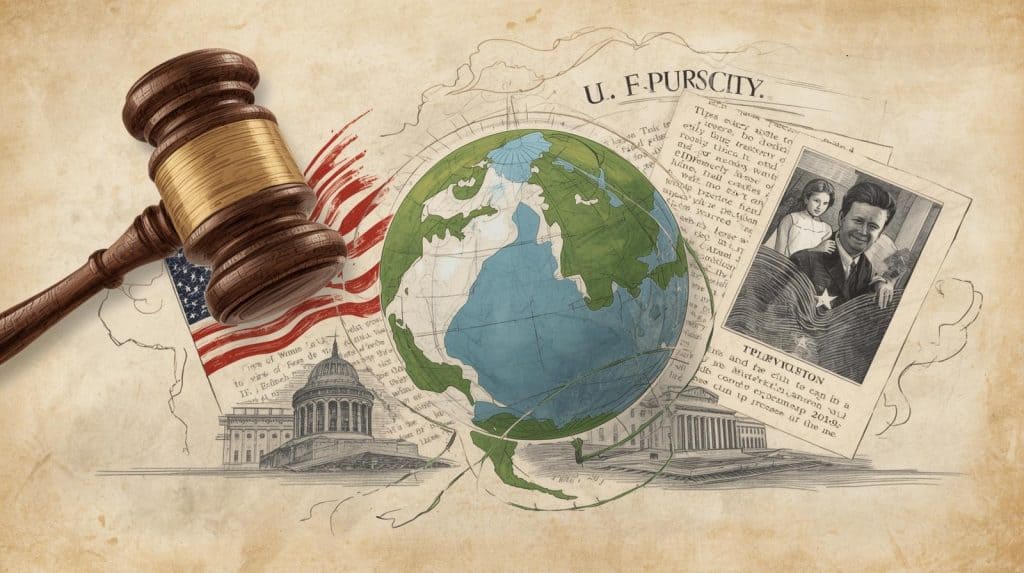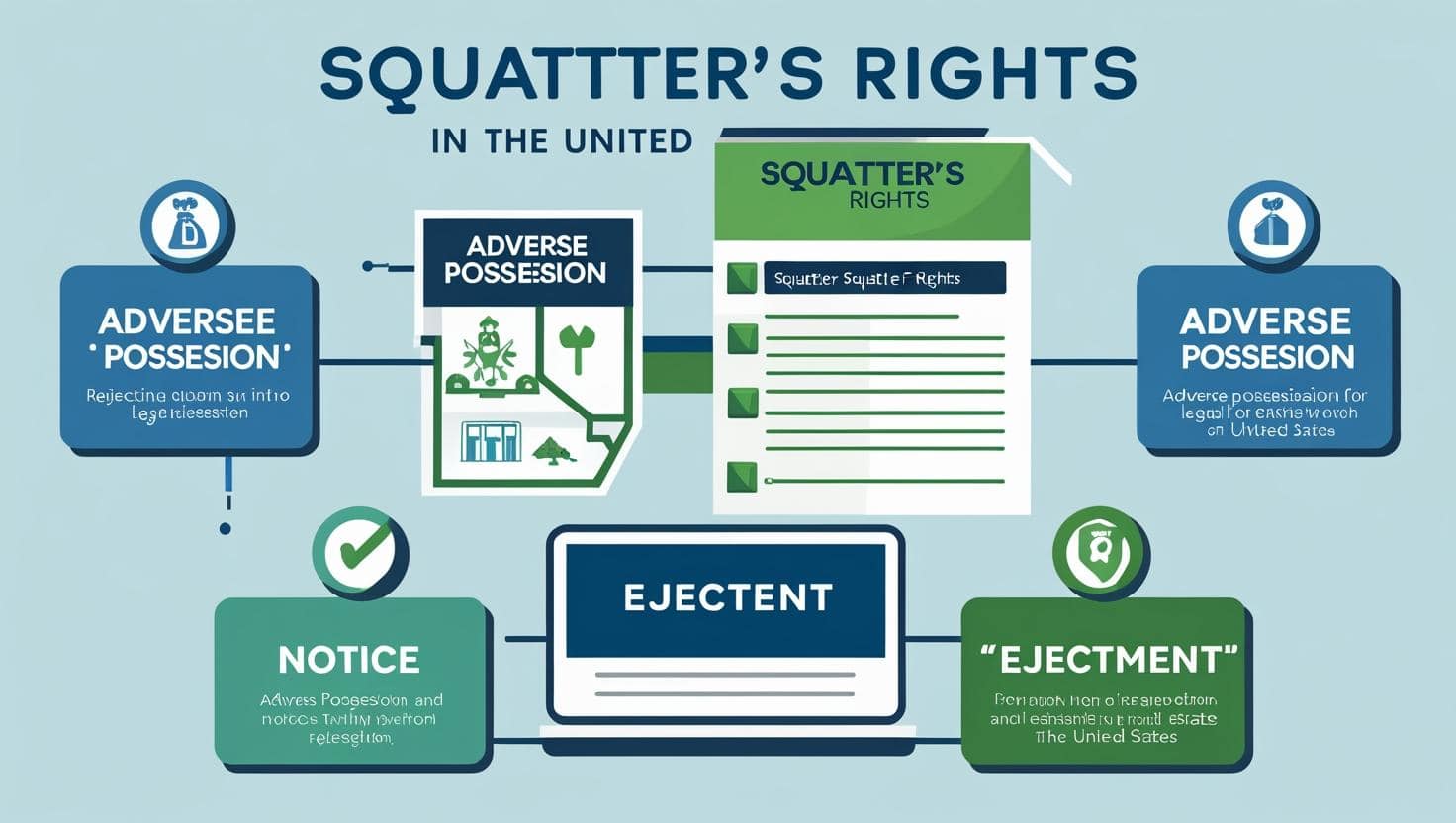Divorce and immigration can collide in ways that raise high‑stakes questions about status, support, custody, and timing across state and federal forums. A divorce immigration lawyer coordinates those moving parts so strategy in one venue does not undermine eligibility in another, especially in real‑world cases where timelines overlap.
Common pressure points include conditional residence and I‑751 waivers, I‑864 Affidavit of Support exposure, UCCJEA jurisdiction for custody, and Hague Convention remedies for cross‑border disputes. Evidence rules, burdens, and deadlines differ across USCIS, EOIR, and state courts. The right plan aligns filings and court orders with federal requirements.
This article explains the governing frameworks, shows how coordinated representation lowers risk, and answers common questions. It is informational and not individualized legal advice.
Key Takeaways
- Divorce and immigration laws are complex and intertwined, requiring specialized legal knowledge and expertise.
- A divorce immigration lawyer coordinates state and federal steps and safeguards the client’s position during divorce and immigration proceedings.
- Legal representation is crucial in divorce and immigration cases, as the consequences of mistakes or oversights can be severe and long-lasting.
- Clients benefit from a divorce immigration lawyer experienced in both divorce and immigration law who can ensure compliance with all relevant regulations.
- For custody, support, property division, asset protection, and spousal support, experienced counsel helps secure enforceable, durable outcomes and align terms with federal obligations.
Who Typically Needs This
This guide is written for conditional residents, sponsored spouses, K‑visa entrants, and families managing custody across state or national borders. A divorce immigration lawyer is also useful where protection orders, VAWA relief, or removal proceedings overlap with divorce.
Understanding the Complexities of Divorce and Immigration Laws
Key federal authorities include INA §§ 204, 212, 216, and 237 (8 U.S.C. §§ 1154, 1182, 1186a, 1227), and implementing regulations in 8 C.F.R. pts. 204, 205, 213a, and 216. Marriage‑fraud findings permanently bar future petition approvals (INA § 204(c); 8 U.S.C. § 1154(c)). Misrepresentation to obtain benefits triggers inadmissibility (INA § 212(a)(6)(C)(i); 8 U.S.C. § 1182(a)(6)(C)(i)).
A divorce can automatically revoke a pending I‑130 immediate‑relative petition because the qualifying relationship ends (8 C.F.R. § 205.1(a)(3)(i)(C)). VAWA self‑petition and certain humanitarian routes are statutory exceptions (e.g., INA § 204(a)(1); 8 U.S.C. § 1154(a)(1)). These complexities make navigation difficult without coordinated guidance.
Jurisdiction and Forum: Where Issues Are Decided
State courts handle divorce, custody, and support, while USCIS adjudicates petitions and applications such as I‑130, I‑485, and I‑751 under federal law. If DHS initiates removal proceedings, the immigration courts (EOIR) decide removability and many forms of relief, and agency filings may continue in parallel. Orders must be crafted so they are enforceable under state law and do not conflict with federal immigration requirements.
Family‑court findings can affect immigration outcomes, but they do not bind federal agencies on legal questions under the INA. Conversely, USCIS or EOIR determinations do not set custody or property rights, which remain within state‑court authority. For that coordination, a divorce immigration lawyer aligns orders and filings so neither forum undermines the other.

Marriage During Proceedings and K‑Visa Specifics
Adjustment based on a marriage entered during removal proceedings requires a “bona fide marriage” showing by clear and convincing evidence (INA § 245(e); 8 U.S.C. § 1255(e)). Evidence typically includes joint residence, commingled finances, and affidavits from third parties, evaluated holistically rather than by checklist.
K‑1 entrants must marry the original U.S. petitioner within 90 days and may adjust status only through that petitioner (8 U.S.C. § 1255(d); 8 C.F.R. § 245.1(c)(8)). If the K‑1 beneficiary married the original petitioner within 90 days but the marriage later ended, adjustment may still proceed based on that qualifying marriage; however, adjustment based on marriage to a different U.S. citizen is not permitted, even if that later marriage is bona fide.
Documents You Will Encounter
These matters generate an extensive documentary record that a divorce immigration lawyer organizes: federal forms such as I‑130 (family petition), I‑485 (adjustment), I‑751 (removing conditions), I‑864 (Affidavit of Support), I‑765 (work authorization), and I‑131 (advance parole); and state‑court papers such as petitions for dissolution, parenting plans, support worksheets, and protective orders. Supporting evidence often includes joint leases or mortgages, bank and insurance records, school and medical records, and sworn statements from third parties. Maintaining a consistent timeline across these materials helps decision‑makers evaluate credibility and avoid contradictions that delay adjudication.
I‑751 Waivers: Standards and Evidence
Conditional residents file a joint I‑751 or pursue a waiver based on a good‑faith marriage that ended in divorce, battery or extreme cruelty, or extreme hardship (INA § 216(c)(4); 8 C.F.R. § 216.5). Waivers may be filed at any time before removal, and USCIS assesses credibility and documentary proof.
Regulations list non‑exclusive evidence such as joint leases, mortgages, bank and insurance records, children’s birth certificates, and affidavits (8 C.F.R. § 216.5(e)). Detailed timelines, third‑party statements, and contemporaneous records often carry significant weight; consistency across sources is persuasive.
I‑864 Support: Rights, Remedies, and Termination
A sponsor’s I‑864 support obligation continues until a statutory endpoint: the sponsored immigrant becomes a U.S. citizen; is credited with 40 qualifying quarters; ceases to be a lawful permanent resident and departs the United States; or either the sponsored immigrant or the sponsor dies (8 U.S.C. § 1183a; 8 C.F.R. pt. 213a). Divorce is not a terminating event. Prevailing immigrants may recover damages and fees in federal court (8 U.S.C. § 1183a(c)).
State spousal‑support orders do not waive federal I‑864 obligations; the two regimes can operate in parallel. Settlement language should acknowledge the I‑864 so enforcement in the appropriate forum remains clear.
VAWA Protections and Confidentiality
VAWA allows certain spouses to self‑petition without the abuser’s participation (INA § 204(a)(1); 8 U.S.C. § 1154(a)(1)). Related confidentiality rules restrict DHS and DOJ from relying on adverse information supplied by an abuser and from disclosing protected information (8 U.S.C. § 1367).
When safety is at stake, protective‑order records, police reports, and medical notes can support VAWA or I‑751 battery/extreme‑cruelty claims. Counsel should collect evidence in ways that preserve safety and comply with both state‑court and federal filing rules, with safety paramount.
Naturalization Timing After Divorce
Lawful permanent residents married to and living in marital union with U.S. citizens may qualify for naturalization after three years; otherwise the general five‑year rule applies (8 U.S.C. § 1430(a); 8 C.F.R. § 319.1). Divorce or separation typically ends “marital union,” returning applicants to the five‑year track.
Applicants must also meet continuous‑residence, physical‑presence, and good‑moral‑character requirements (8 U.S.C. § 1427(a)). Unresolved I‑751 issues can delay or bar naturalization until conditions are removed.
Derivative Nonimmigrant Status After Divorce
Derivative spousal categories (such as H‑4 or L‑2) generally end when the qualifying marriage ends, and remaining in the United States without another status can trigger removability for failure to maintain status (8 U.S.C. § 1227(a)(1)(C)(i)). Timely filings for change or extension of status may preserve eligibility.
Travel and work authorization often depend on maintaining or changing status. A divorce immigration lawyer coordinates filings to avoid unlawful presence and to preserve future immigration options, to protect long‑term eligibility.
Coordinating with Removal Proceedings (EOIR)
Once proceedings commence, immigration judges decide applications like adjustment, waivers, and cancellation where eligible, while USCIS retains jurisdiction over some petitions. Parallel filings should be timed to the master‑calendar and individual‑hearing schedule.
Stays of removal, custody redetermination, and administrative closure are case‑specific remedies; counsel aligns them with state‑court timelines for divorce, custody, and support so orders do not conflict. In practice, the EOIR schedule often becomes the primary schedule that structures related milestones.

How a Divorce Immigration Lawyer Can Help You Navigate the Legal System
A divorce immigration lawyer can structure settlements with I‑864 exposure in mind, preserve eligibility for I‑751 waivers, and avoid admissions that create removability. Counsel also manages evidence: bona fide marriage proof, abuse documentation for VAWA or I‑751 battery waivers, and custody records consistent with UCCJEA jurisdiction. In sum, coordination across forums is the unifying task.
Additionally, where immigration petitions are pending, counsel monitors automatic‑revocation risks after divorce (8 C.F.R. § 205.1(a)(3)(i)(C)). Where family‑court orders intersect with status, counsel raises timing issues so agency filings and hearings align.
The Importance of Legal Representation in Divorce and Immigration Cases
An experienced divorce immigration lawyer provides coordinated representation across forums and maintains professional standards of advocacy.
Outcomes and Timelines—What Varies and Why
Processing times and court calendars vary by jurisdiction and case posture. Statutory eligibility, quality of evidence, and agency or court workload drive timing and results. Sound planning anticipates parallel proceedings so filings do not work at cross‑purposes.
There is no universal “success rate” or standard timeline across divorce and immigration matters; outcomes turn on statutes, evidence, and forum jurisdiction. Fixed percentages or cookie‑cutter timelines are not reliable indicators and can be misleading. Counsel explains forum, burden, and proof standards and prevents avoidable errors.
Protecting Your Rights and Interests During Divorce and Immigration Proceedings
Divorce and immigration proceedings can give rise to a range of issues that need to be addressed, including child custody, child support, property division, spousal support, and more. A divorce immigration lawyer safeguards the client’s position in each of these areas.
For example, in child custody cases, counsel can advocate for the client’s proposed arrangement based on the child’s best interests. Counsel can assemble evidence—such as proof of a stable environment—to support the client’s position. Counsel can also negotiate toward agreement or represent the client in court if necessary.
In property‑division cases, counsel works to protect the client’s assets and to secure a fair allocation of marital property. Counsel identifies all relevant assets, including those affected by immigration‑related restrictions. Counsel can negotiate a resolution or represent the client in court if needed.
Avoiding Common Mistakes in Divorce and Immigration Cases
Do not assume divorce “cures” prior misrepresentation or sham‑marriage findings; INA § 204(c) permanently bars future marriage‑based petitions. Do not miss I‑751 filing windows or omit a waiver after divorce; late or incomplete filings can terminate conditional status. Do not rely on informal “success rates” or generic timelines; check the governing statute, regulation, and controlling case law for your facts.
Ensuring Compliance with Immigration Laws During Divorce Proceedings
Conditional residents ordinarily file a joint Form I‑751 during the 90‑day window before expiration (8 C.F.R. § 216.4(a)(1)). After divorce, a waiver may be filed at any time based on a good‑faith marriage that ended in divorce, battery or extreme cruelty, or extreme hardship (INA § 216(c)(4); 8 U.S.C. § 1186a(c)(4); 8 C.F.R. § 216.5). Failure to timely remove conditions can terminate status and lead to removal proceedings, where DHS must show termination was proper.
Sponsors who signed a Form I‑864 Affidavit of Support remain obligated despite divorce until a statutory terminating event occurs (8 U.S.C. § 1183a(a)(1), (a)(2), (e)). Federal courts enforce I‑864 obligations. See Erler v. Erler, 824 F.3d 1173, 1177–79 (9th Cir. 2016); Liu v. Mund, 686 F.3d 418, 421–22 (7th Cir. 2012).
Negotiating Child Custody and Support in Divorce and Immigration Cases
Custody jurisdiction and enforcement across U.S. states follow the Uniform Child Custody Jurisdiction and Enforcement Act (UCCJEA) and the federal Parental Kidnapping Prevention Act (28 U.S.C. § 1738A). International abduction remedies proceed under the Hague Convention as implemented by the International Child Abduction Remedies Act (22 U.S.C. §§ 9001–9011). Passport issuance for minors generally requires two‑parent consent with limited exceptions (22 C.F.R. § 51.28).
Support establishment and enforcement use the Uniform Interstate Family Support Act, adopted in all U.S. jurisdictions. Parallel immigration proceedings do not displace a state court’s authority to set custody and support; a divorce immigration lawyer coordinates timelines and evidence across forums.
In child‑support matters, counsel works to ensure the child’s financial needs are met. Counsel can calculate appropriate support based on statutory factors and the family’s financial circumstances. Counsel can also negotiate agreement or represent the client in court if necessary.
Addressing Property Division and Asset Protection in Divorce and Immigration Cases
Property division and support are governed by state law; immigration consequences may arise from the I‑864 contract and from status changes that affect employment eligibility. Community‑property and equitable‑distribution regimes use different frameworks for classification and division. A divorce immigration lawyer should harmonize settlement terms with federal obligations so orders are enforceable and do not conflict with immigration requirements.
Dealing with Spousal Support and Alimony in Divorce and Immigration Cases
State courts set spousal support under state statutes and case law. Separately, a sponsored immigrant may seek federal enforcement of the I‑864 for support at 125% of the Federal Poverty Guidelines until a terminating event occurs; divorce alone is not a terminating event (8 U.S.C. § 1183a(a), (e)). Courts frequently award I‑864 relief independent of or in addition to state‑law support. See Erler, 824 F.3d at 1177–79; Shumye v. Felleke, 555 F. Supp. 2d 1020, 1024–26 (N.D. Cal. 2008).

Finding the Right Divorce Immigration Lawyer
When facing divorce and immigration proceedings, it is crucial to retain a divorce immigration lawyer who specializes in these cases. Counsel has the knowledge and experience necessary to navigate the complexities of both divorce and immigration laws and can provide guidance and representation.
When selecting counsel, targeted questions help assess fit. Consider asking:
- How many cases have you handled that involve both divorce and immigration issues?
- What representative outcomes or published decisions reflect your work in similar cases?
- Can you provide references from past clients?
- How do you approach negotiations and courtroom representation?
Choosing the right lawyer is critical because they coordinate strategy across forums and advocate for the client at each step.
Divorce and immigration are complex areas of law that can become even more complicated when they intersect. Navigating the legal system in these cases requires a deep understanding of both divorce and immigration laws, as well as the ability to navigate the unique challenges that arise when these two areas of law come together. This is why it is crucial to have legal representation when facing divorce and immigration proceedings.
A lawyer who specializes in these cases can provide invaluable assistance throughout the process. They have a deep understanding of both areas of law and can help you navigate the complexities that arise when they intersect.
They preserve eligibility for relief, ensure compliance with immigration requirements, negotiate resolutions, and prepare the record for agency and court review. When these systems intersect, targeted counsel reduces risk and supports durable outcomes.
Clients facing both divorce and immigration issues benefit from early, coordinated legal advice. Early alignment of state‑court schedules with USCIS or EOIR deadlines reduces missed windows and preserves options for relief. Bar association resources and official agency guidance help clients understand the process while counsel manages filings.
FAQs
What is a divorce immigration lawyer?
A divorce immigration lawyer coordinates state family‑law proceedings with federal immigration filings and proceedings. Typical matters include I‑130 and I‑485 strategy, I‑751 joint filings and waivers, I‑864 enforcement, custody jurisdiction, and Hague Convention issues.
What kind of cases does a divorce immigration lawyer handle?
Matters include removal of conditions after divorce (INA § 216), I‑864 support suits, custody and travel orders with Hague considerations, and motions in removal proceedings. They also address automatic I‑130 revocation after divorce and marriage‑fraud bars (8 C.F.R. § 205.1(a)(3)(i)(C); INA § 204(c)).
What are the benefits of hiring a divorce immigration lawyer?
A divorce immigration lawyer aligns state‑court timelines with USCIS or EOIR deadlines, protects eligibility for waivers or relief, and drafts settlements that reflect federal support obligations. They also identify and mitigate fraud, misrepresentation, and status‑violation risks that can foreclose future immigration benefits (INA §§ 204(c), 212(a)(6)(C)(i)).
How do I find a good divorce immigration lawyer?
Consider experience with I‑751 waivers, I‑864 litigation, and Hague Convention matters. Ask about coordination with immigration counsel when family‑law counsel is primary, or vice versa. Verify licensing and check for published decisions or federal‑court experience where I‑864 enforcement is likely.
How much does a divorce immigration lawyer cost?
Fees vary by forum, relief sought, and evidentiary demands. Flat fees are common for discrete filings; hourly fees are typical for contested matters or litigation. Written fee agreements and trust‑account handling are required by state professional‑conduct rules.




























